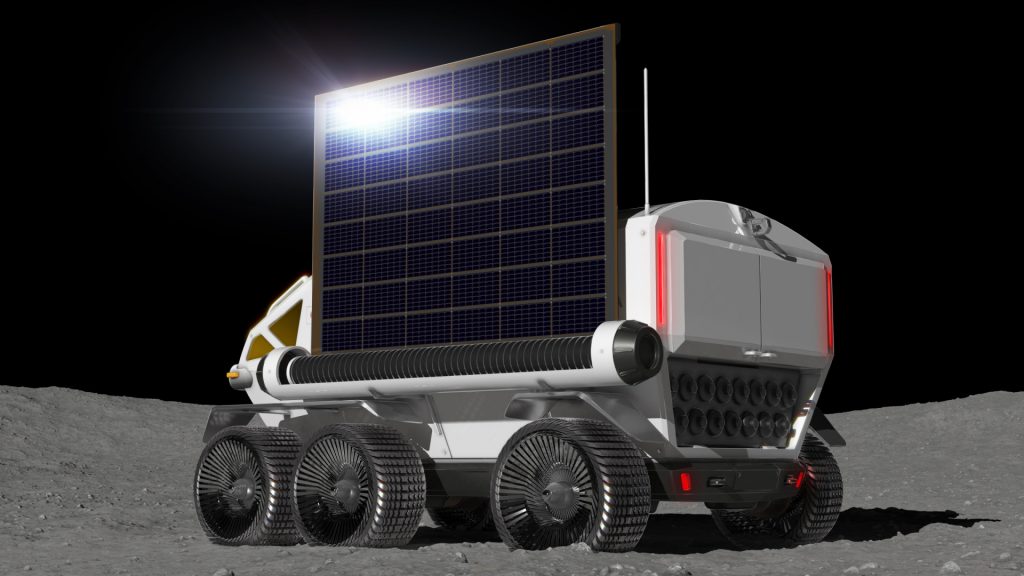Toyota Motor is setting its sights on space exploration with an ambitious plan to power a manned lunar rover using regenerative fuel cell technology. This groundbreaking initiative raises the possibility of harnessing the moon’s water ice as an energy source for future missions.
Under Prime Minister Fumio Kishida’s leadership, Japan is actively advancing its space ambitions, collaborating with NASA’s Artemis program and aiming to have an astronaut at a lunar space station called Gateway by the latter half of the 2020s. In collaboration with Japan’s space agency since 2019, Toyota is developing the Lunar Cruiser, a manned lunar rover with plans to land it on the moon by 2029.
Toyota’s regenerative fuel cell technology lies at the heart of the Lunar Cruiser’s power source. This innovative system utilizes solar energy and water to produce hydrogen and oxygen through electrolysis during daylight hours. The fuel cells then use this stored energy to supply electricity during the lunar night, which lasts about 14 Earth days. The Lunar Cruiser’s ability to generate power during extended periods of darkness and extreme cold is a critical advancement, enabling it to traverse the moon’s surface for multiple days without interruption.
Ken Yamashita, head of lunar exploration projects at Toyota, emphasized the importance of sourcing essential items on-site over an extended period. This approach ensures the rover can carry out long-term research and exploration missions on the moon. The Lunar Cruiser aims to carry two astronauts for 42 days annually and maintain operational capabilities for an impressive ten years.
To extend the lunar rover’s operational life beyond ten years, Toyota envisions a partnership with companies that can supply the required water. As water is a vital resource for fuel cell technology, initial water supplies must be sent into space with the Lunar Cruiser. However, generating usable water for fuel cells directly from the moon’s ice water or mining it independently remains a complex challenge. Toyota acknowledges that such capabilities might depend on future developments or collaborations with other companies.
While Toyota’s lunar exploration ambitions are groundbreaking, they also rely on innovative advancements in water extraction and utilization technologies. Collaborative efforts between various companies and space agencies may be necessary to unlock the full potential of lunar resources as a sustainable energy source for space missions.
As the Lunar Cruiser project advances, humanity edges closer to realizing long-term lunar exploration and unlocking the moon’s potential as a stepping stone for space exploration beyond.

